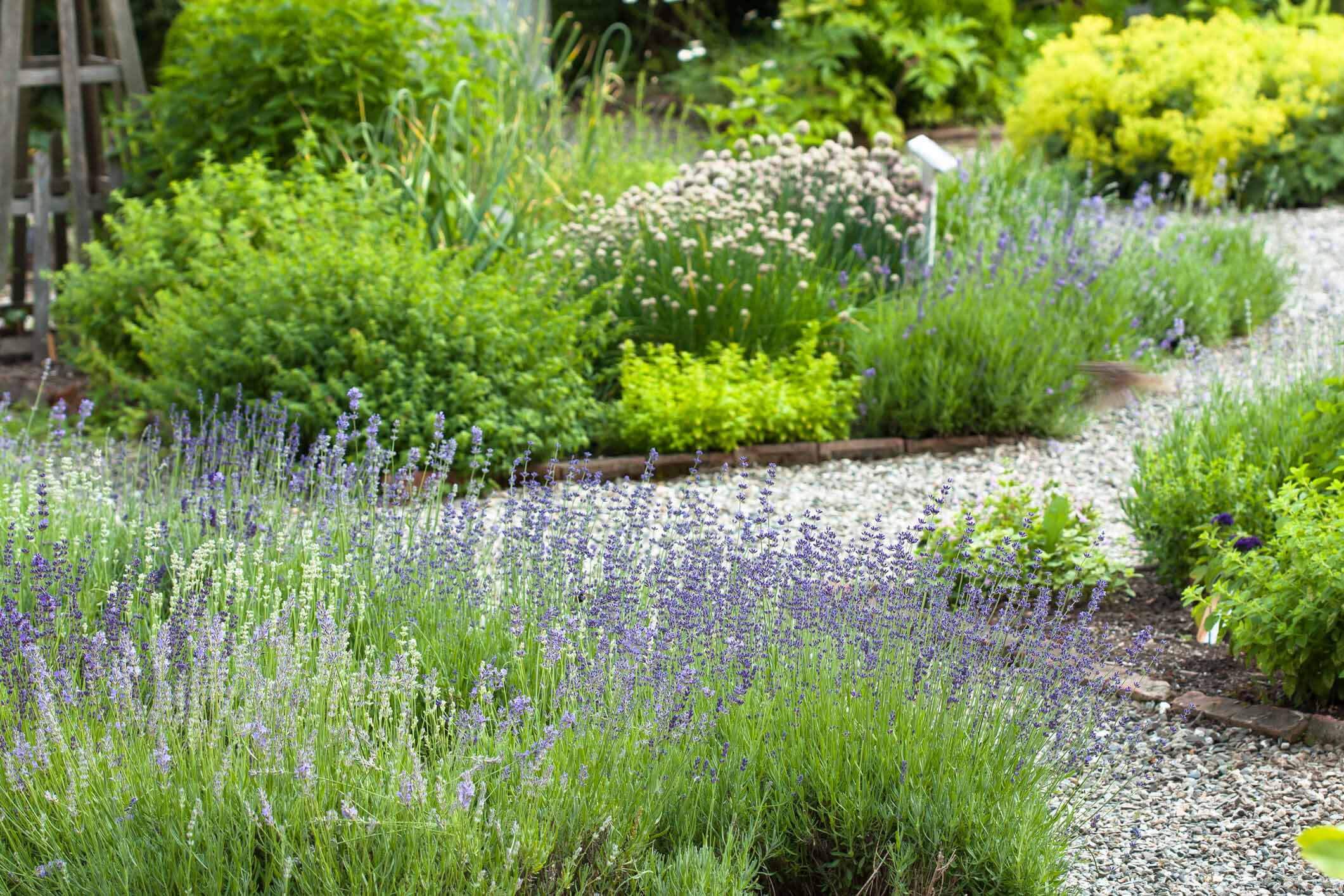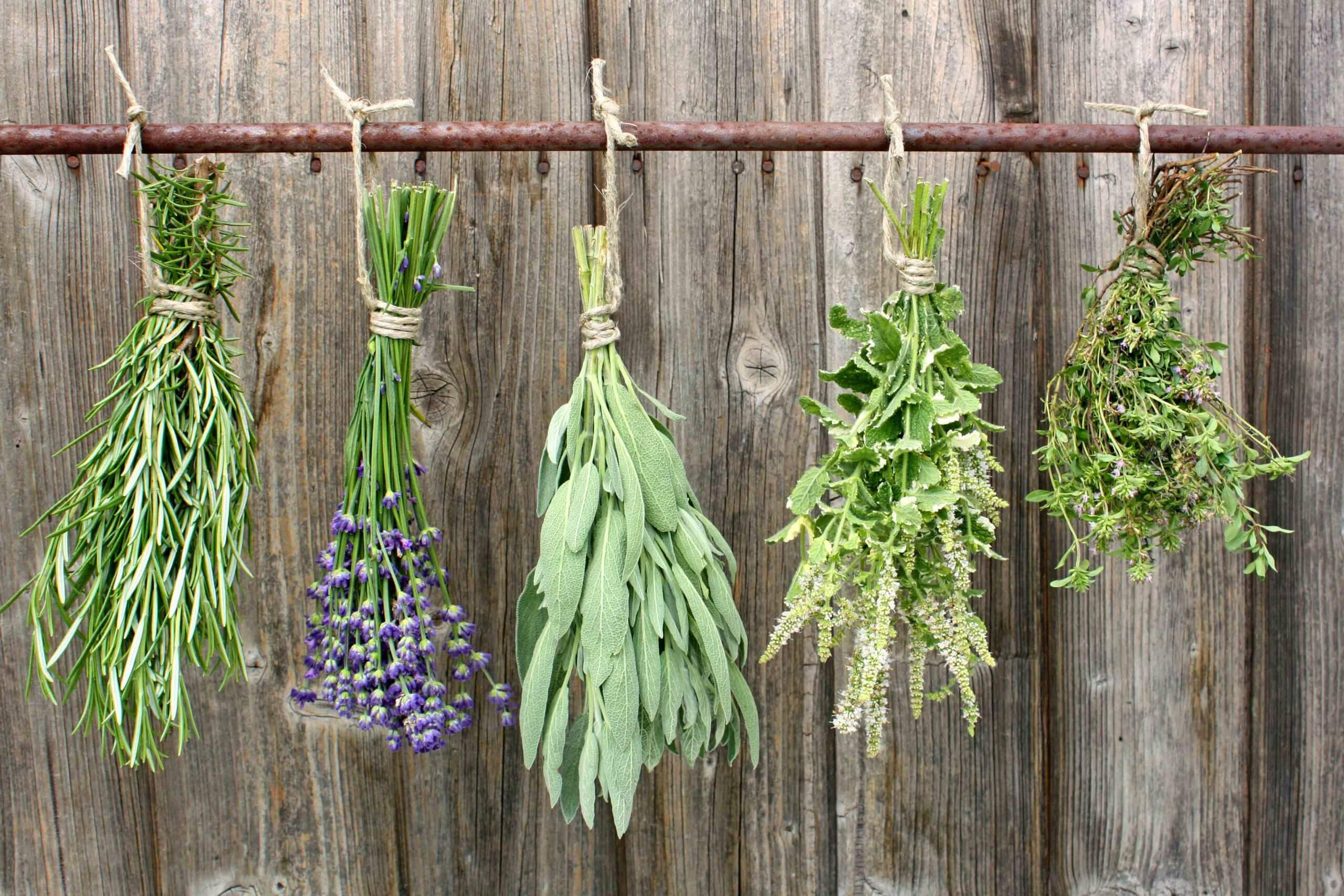
What’s in a cup of herbal tea? Aromatic dried leaves and fruits impart the comforting, rich flavors for herbal tea, which are most welcome in chilly weather. Gardeners that grow herbs, fruits, and spices already have the raw ingredients for tea. From there, it’s a matter of well-timed preservation and creative tea mixing.
History
Unlike teas made from the leaves of the tea shrub (Camellia sinensis), herbal teas are not caffeinated. They are tied to all cultures with some tracing back to the ancient world. The Ancient Egyptians favored a tangy tea made from hibiscus buds (Hibiscus sabdariffa); mint tea (Mentha spp.) was a staple in Northeast Africa; the ancient Greeks drank a sweet tea made from ironwort mountain mint (Sideritis spp.), and the Chinese drank a floral tea made from Chrysanthemum buds. In India, a wonderfully complex herbal tea called Kadha, flavored with ginger, cloves, pepper, cardamom, fennel seeds, cinnamon, and bay leaf, was used to fight colds and flu. These teas were used for traditional medicine as well as enjoyment, and all are still used today.
Herbal Tea Health Benefits
The medicinal value of some herbal tea components have been confirmed. Chamomile and ginger help settle the stomach, mint tea has been shown to help with respiratory ailments, and Echinacea has been proven to ease cold and flu symptoms. Adding rose hips, citrus peel, or cranberries to your tea will add tang and flavor to your tea while also providing a boost of vitamin C. When crafting tea mixes, consider ingredient health benefits as well as flavors.
Garden Herbs for Tea

All herbs for tea are easy to grow, and most are common to home gardens. (Click here to learn how to grow edible herbs. Click to learn how to grow potted ginger.)
Lemon Verbena (Aloysia citrodora, Zone 8-10, 3-4’): The lemony leaves and flowers of this tender herb maintain their tangy citrus flavor when dried.
Lavender (Lavandula spp.): Lavender leaves and flowers are traditionally added to Earl Grey tea, but they also taste great in herbal teas.
Mint (Mentha piperita): Peppermint leaves and flowers are widely used for herbal tea and can be steeped fresh or dried. All other culinary mints make great tea.
Lemon Balm (Melissa officinalis): The citrusy leaves of lemon balm also have a refreshing hint of mint.
Sage (Salvia officinalis): The comforting, warm flavor of sage is favored in wintery dishes but also makes delicious tea.
Stevia (Stevia rebaudiana): Add dried stevia leaf to teas to impart natural sweetness without the need for added sugar.
Wild Bergamot (Monarda fistulosa): The leaves and purplish flowers of wild bergamot are dried to make a heady tea with hints of mint and bergamot orange.
Thyme (Thymus spp.): Orange and lemon thyme varieties are best for tea making
Flowers and Spices for Tea

Elderflower (Sambucus ): Sweet, fragrant elderflowers add a delicate, pleasing flavor to teas.
Chamomile (Matricaria retutica): Clouds of tiny white daisies cover chamomile in late spring. These fragrant flowers can be used for fresh or dry tea.
Roselle (Hibiscus sabdariffa): Late in the season, the tea hibiscus produces maroon buds that are dried to make tangy, fragrant tea that is purplish-red when steeped.
Rosa petals (Rosa spp.): Organically grown rose petals from fragrant roses add floral flavor to teas. Pair them with fruits and citrus peel.
Ginger root (Zingiber officinale): Warm and spicy ginger root tea clears the head and soothes the stomach.
Echinacea root (Echinacea purpurea and Echinacea pallida): Dried Echinacea root has a pungent, aromatic flavor used to make a medicinal tea.
Fruits for Tea

Apples (Malus domestica), blackberries and raspberries (Rubus spp.), rose hips (Rosa spp.), cranberries (Vaccinium macrocarpon), elderberries, and citrus peel all impart tart, fruity flavors to tea. They are also vitamin rich, giving teas added nutritive value. Pair them with minty, lemony, and floral tea ingredients. (Here are tips for growing your own apples, blueberries, and, blackberries and raspberries.)
Harvesting and Preserving Tea Ingredients

Harvest leaves and flowers for tea when they are fresh. Fruits should be fully ripe. For best flavor, gather them on the day you plan to dry them. Gently rinse off the ingredients and pat them dry before preservation. Here are the three most common drying methods:
1. Hanging Herbs
Gather bundles of six stems for quick drying (larger bundles dry more slowly and may mold). Hang them upside down in a cool, dry spot away from the sun. After a couple of days, their leaves should be crispy dry and ready for tea making.
2. Oven Drying Herbs and Fruits
Oven drying speeds the process without the need for a dehydrator. Preheat the oven to 140°F. Space the leafy stems apart on a pan lined with parchment paper and place the tray in the oven until leaves are crisp. This often takes an hour or two, but more time may be needed.
Small fruits should be cut in half and apples should be sliced thinly for fast drying. Drying can take up to two hours or more. The citrus should be zested before drying.
3. Dehydrating Herbs and Fruits
Food dehydrators provide the best drying method for fruits and herbs. Space the stems and cut fruits apart on dehydrator racks and allow them to dry until crisp and leathery. The time it takes depends on the machine and what is being dried. Check them every couple of hours to determine dryness.
After the herbs have been dried, slide your fingers down each stem to separate the leaves. Then mix your teas and store them in tins for up to a year. Freezing teas will help them last longer.
Mixing Tea

Some teas, like chamomile and mint tea, taste great on their own, but others taste better when mixed with other complementary flavors. Don’t be afraid to experiment! Here are several tasty tea mixes that any gardener can make.
Fragrant Apple Tea¼ cup chopped, dried apples¼ cup dried elder flowers¼ cup chopped, dried cranberries¼ cup dried wild bergamot leaf1 teaspoon crushed, dried stevia leaf
|
Zingy Lemon Mint Tea½ cup dried mint leaves¼ cup dried lemon balm or verbena leaves¼ cup chopped, dried rose hips1 tablespoon dried lavender leaves1 teaspoon crushed, dried stevia leaf
|
Rosy Blackberry Tea¼ cup chopped, dried rose hips¼ cup chopped, dried blackberries¼ cup dried rose petals¼ cup dried chamomile flowers1 teaspoon crushed, dried stevia leaf
|
Wintery Herbal Tea¼ cup dried wild bergamot leaf¼ cup dried chamomile flowers¼ cup chopped dried cranberries1 tablespoon dried orange thyme leaves1 tablespoon crushed, dried sage leaves
|
Orange Ginger Mint Tea¾ cup dried mint leaves1 tablespoon dried orange zest2 tablespoons sliced, dried ginger1 teaspoon crushed, dried stevia leaf
|
Herbal Tea for Colds½ cup dried mint leaves¼ cup chopped dried hibiscus buds1 teaspoon crushed, dried stevia leaf2 tablespoons chopped, dried Echinacea root |
